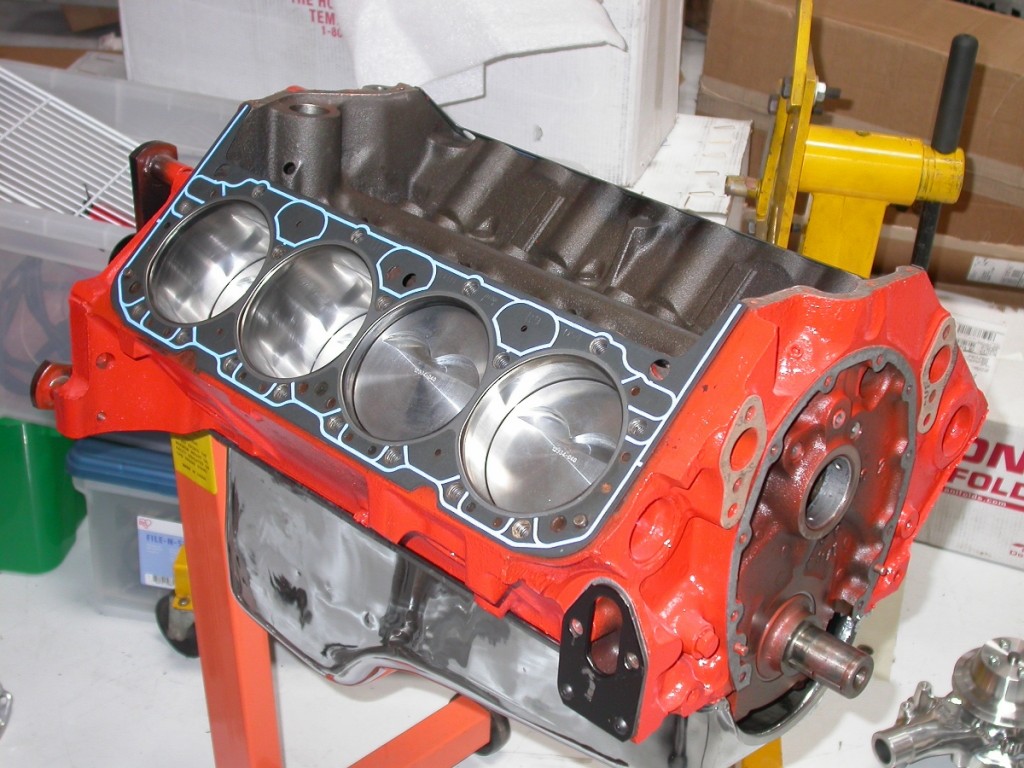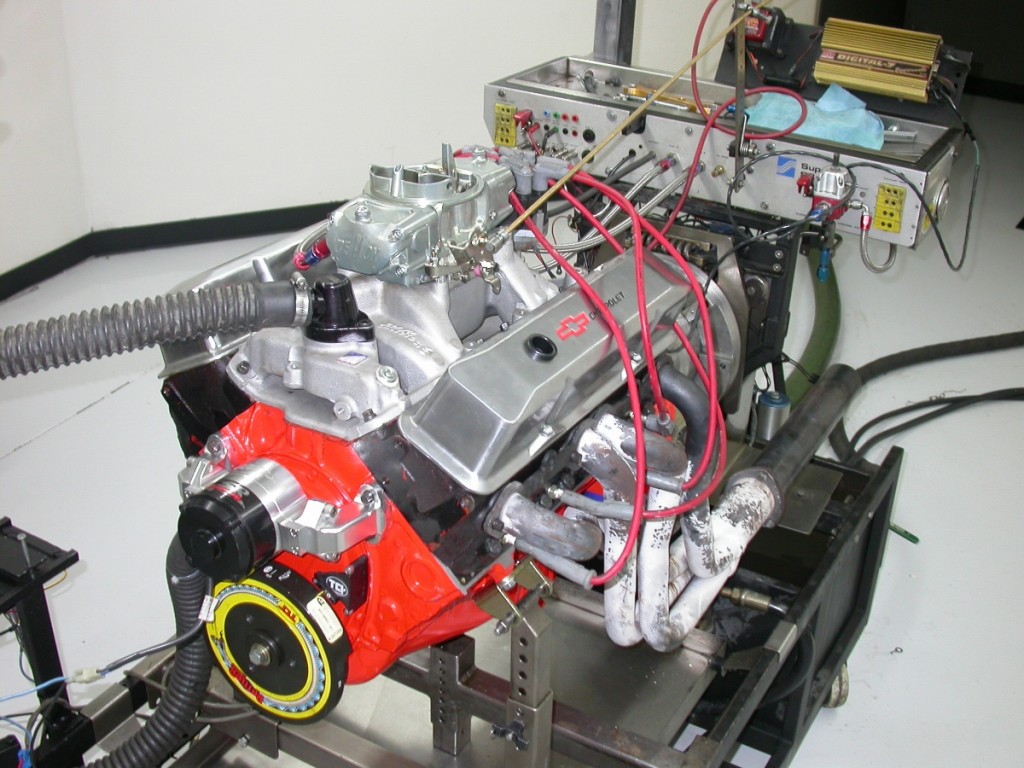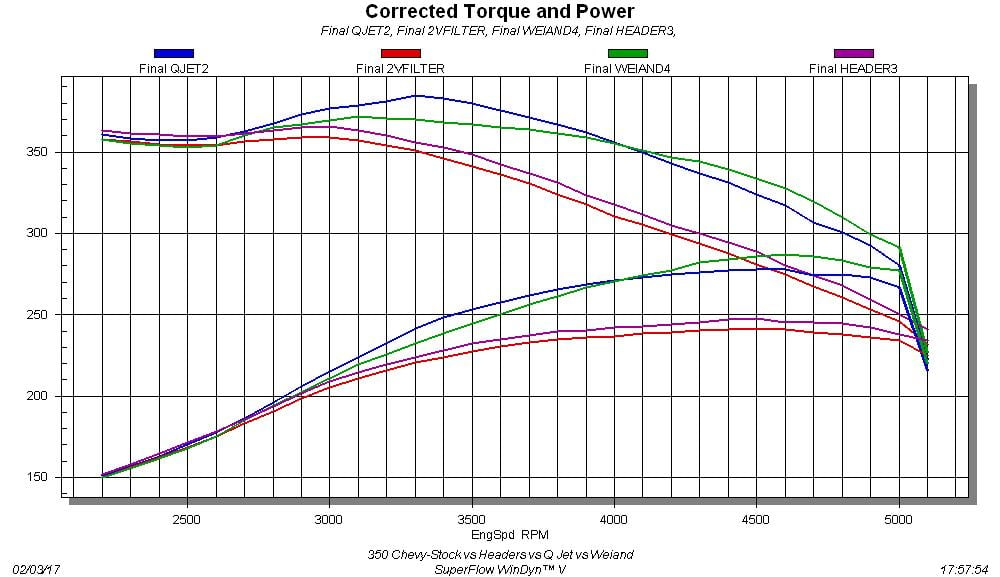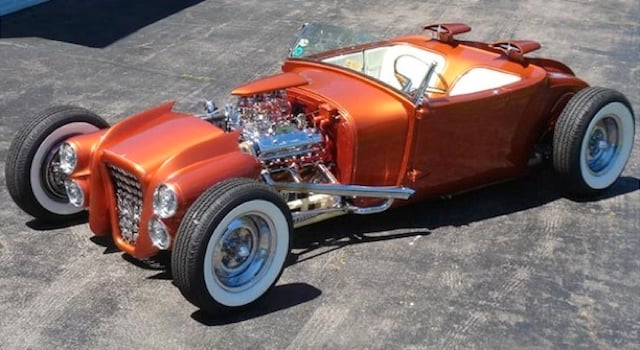
Small-blocks all have one thing in common — potential! It just takes the right combination of bolt-ons.
Words and Photos By Richard Holdener
Performance projects of any magnitude all have on thing in common. Though it seems some never end, they all share a beginning, and this Bolt-Ons for Beginners was no exception. Despite the current wave of LS popularity, the original small-block still reigns supreme. This is not surprising given its extensive life span, production numbers, and availability in local wrecking yards. With such abundance, we decided to take a close look at some minor mods for a typical small-block, and what better place to start than a bone-stock 350?
By stock, we mean the whole enchilada. Our test mule featured a two-barrel carb and intake, stock 882 (smog) heads and cam, and even the wretched factory exhaust manifolds. The idea was to begin with the mildest small-block in existence, then illustrate how to make it better with simple, but effective mods. Our list of performance parts included things like headers, a four-barrel, and mild camshaft. You know, the kind of mods the average enthusiasts, even a first timer, might perform.
Given their abundance in local boneyards, it is possible to simply pluck one out and start your mods. Of course, the same holds true if you already have a Chevy (or GM) vehicle equipped with a small-block (of any displacement). Because we had some serious plans for our 350 down the road, we decided to treat our test mule to some TLC in preparation for the dyno thrash. Our small-block was taken to L&R Automotive, where the four-bolt block was bored .030 over in preparation for a set of forged (flat-top) pistons. The combo was teamed with the factory cast crank and a set of forged connecting rods (from Speedmaster). The cast crank will take considerable abuse and was more than adequate for our eventual power and rpm needs. The forged, flat-top pistons featured valve reliefs to allow for wilder (future) cam timing and were treated to a set of Total Seal rings. The short-block was completed with a replacement stock cam from a local auto parts store (180-hp small-block applications) and hydraulic flat-tappet lifters.
The fact we augmented the short-block components had little effect on the power production, other than the use of the flat-top pistons (which improved compression slightly). The limiting factor in terms of power for the small-block would still be the restrictive heads, cam, and intake. In preparation for the induction system, the short-block received a Mellings oil pump and pick up, along with a hardened oil-pump drive shaft. The heavy-duty oil pump shaft costs a few extra bucks, but was cheap insurance against oil starvation. The completed short-block was equipped with a set of smog-era 882 heads. In addition to being prone to cracking, the 882 heads offered a 1.94/.15 valve combo, 76cc chambers and lackluster flow numbers. Hardly the ideal choice for a performance build, but that is what came on our core motor, so we stuck with them to establish our baseline. The 882 heads were topped with a cast-iron, two-barrel factory intake and matching 2G carburetor. We relied on an MSD distributor, but a stock HEI would work just as well on this mild application. Run with stock exhaust manifolds feeding a Hooker 2.5-inch exhaust system, the two-barrel 350 produced 241 hp at 4,500 rpm and 359 lb-ft of torque at 3,000 rpm.
Having properly broken in the motor and established our baseline, it was time for some simple mods. One of the most popular mods for any small-block has to be a set of performance headers. To replace our factory exhaust manifolds, we selected a set of 1 5/8-inch, long-tube, FlowTech headers. It is important to note headers improve power not because they flow better than the stock manifolds, but because of the reflected waves produced by the primary length (and other design criteria) that help scavenge exhaust out of (and intake charge into) the combustion chamber. The length of the primary tubing determines the effective rpm range, but headers can be worth 15-20 hp on the right application. Run on our restrictive two-barrel 350, the headers improved the power output to 248 hp and 365 lb-ft of torque, with consistent gains through the rev range.
After the exhaust mods, we focused our attention to the intake side of the equation. We replaced the two-barrel induction with a factory four-barrel, Q-Jet set up. Cheap and easy to find in the wrecking yard, the Q-Jet set up increased the power output of the 350 by 30 hp, from 248 hp to 278 hp. The torque output was up, as well, jumping to 385 lb-ft of torque. With just headers and a four-barrel, the output was already up by 37 hp and 20 lb-ft of torque, but there was even more to come.
After replacing the easy stuff, we figured it was high time to get our hands dirty and dig into the motor. Before swapping out the 882 heads and wimpy stock cam, we decided to make one final upgrade to the top end. For no other reason than we hated lifting the cast-iron intake manifold, we replaced it with an aluminum, dual-plane 8004 from Weiand. The Weiand was teamed with the same Q-Jet carb, which resulted in a noticeable increase in power (to 287 hp), but a slight loss in torque (down to 372 lb-ft).
At this point, the stock valve springs were limiting the rpm and power gains offered by the Weiand, so we stepped up big time by replacing both the cam and cylinder heads. Though the best choice would be either a set of factory Vortec or aftermarket aluminum heads, we decided to see what was possible with our existing 882 castings. The heads were treated to porting, new valves, and a revised spring package courtesy of Power Heads in Fullerton, California. Replacing the 1.94/1.50 valve combo was a set of 2.02/1.60 valves (from Speedmaster) that each received a three-angle valve job. Each head also received a light surface to ensure proper sealing, but we did not improve the compression ratio (above 9.0:1) with extensive milling (though it would be beneficial).
- Images: John Cooper
The ported 882 heads were teamed with a revised cam profile. Though more powerful cam profiles are available, we decided to keep things mild and drivable for this test. Working with the 882 heads was one of our favorite mild, RV-type cams, the COMP PE246. The Pure Energy 246 cam offered a .429/.438 lift split, a 203/212 duration split, and a 110-degree lobe separation angle. We liked the PE246 because it combined near- stock idle quality with plenty of extra power. Previous testing has shown the 246 to be worth 30-35 hp over the stock cam all by itself. Naturally, we were anxious to see what it would be worth when combined with the extra flow offered by the ported heads. After installation, the cam/head package increased the power output from 287 hp and 372 lb-ft of torque to 341 hp and 401 lb-ft of torque.

The final run of the day involved installation of an Edelbrock Performer RPM Air Gap intake and Barry Grant 650 Mighty Demon carb. The new induction system pushed the 350 past the one-hp-per-cubic-inch mark, with peak numbers of 364 hp and 422 lb-ft of torque. Best of all, this is the kind of combination any shade-tree mechanic can easily duplicate or just take bits and pieces of.
Before completing our Bolt-Ons for Beginners testing, we made one last change by swapping out the Weiand and Q-Jet for a more performance-oriented induction system. After installation of an Edelbrock Performer RPM Air Gap intake and Barry Grant 650 Might Demon carb, the 350 spit out 364 hp and 422 lb-ft of torque. Best of all, the power gains came from affordable, easy-to-install modifications even a beginner could tackle.

350 Chevy-Stock vs Headers vs Q-Jet
The graph shows that a stock two-barrel, 350 Chevy could hardly be considered a power house. The combination of mild cam timing and limited breathing through the two-barrel induction and stock iron heads resulted in peak numbers of just 241 hp and 359 lb-ft of torque. The mild combination even limited the gains offered by the Flowtech headers, but the exhaust mods increased the power output to 248 hp and 365 lb-ft of torque. Replacing the Rochester 2G with a factory (cast-iron) four-barrel intake and Q-jet pushed power production up to 278 hp and 385 lb-ft of torque. The final mod involved replacing the factory intake with a Weiand 8004 aluminum (dual-plane) intake. The swap reduced torque slightly (to 372 lb-ft) but increased peak power to 387 hp. The stock valve springs limited further gains offered by the Weiand, as valve float reared its ugly head.

350 Chevy-Weiand vs Heads/Cam vs RPM Air Gap
The next upgrade involved a cam change and ported cylinder heads. Previous testing had shown that the Comp COMP PE246 cam alone can be worth 30-35 horsepower, but the combination of the ported 882 heads and PE246 cam increased the power output of the small- block to 341 hp and 401 lb-ft of torque. The final change to our small- block was to replace the Weiand and Q-Jet with an Edelbrock Performer RPM Air Gap intake and Barry Grant Demon carburetor. This resulted in a final power output of 364 hp and 422 lb-ft of torque. Despite limiting ourselves with the ported 882 castings, the heads, cam, and intake improved the power output of our stock motor by over more than 120 hp!
Sources: ARP, Arp-bolts.com; COMP Cams, compcams.com; Holley/Hooker/NOS, holley.com; MSD, Msdignition.com; Speedmaster, Speedmaster79.com

















